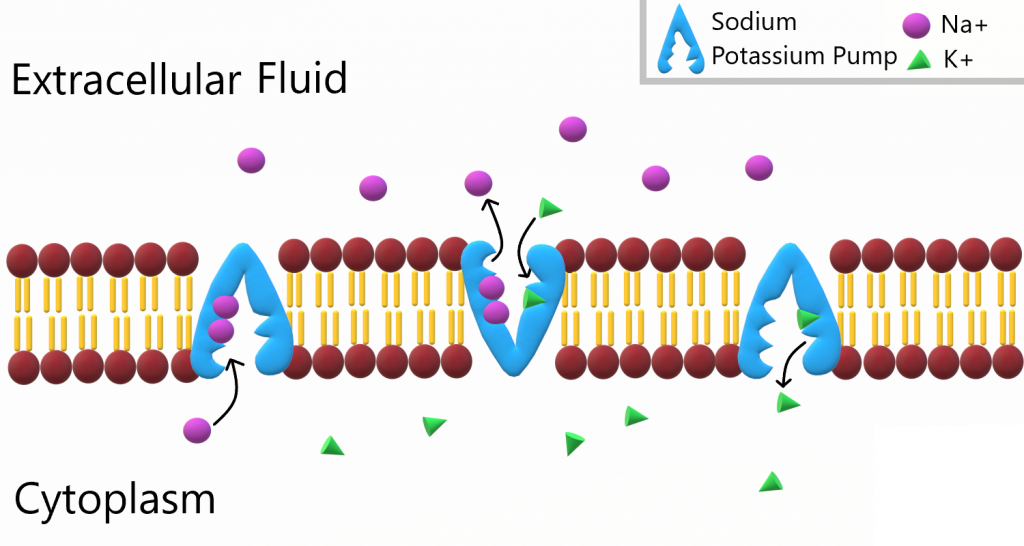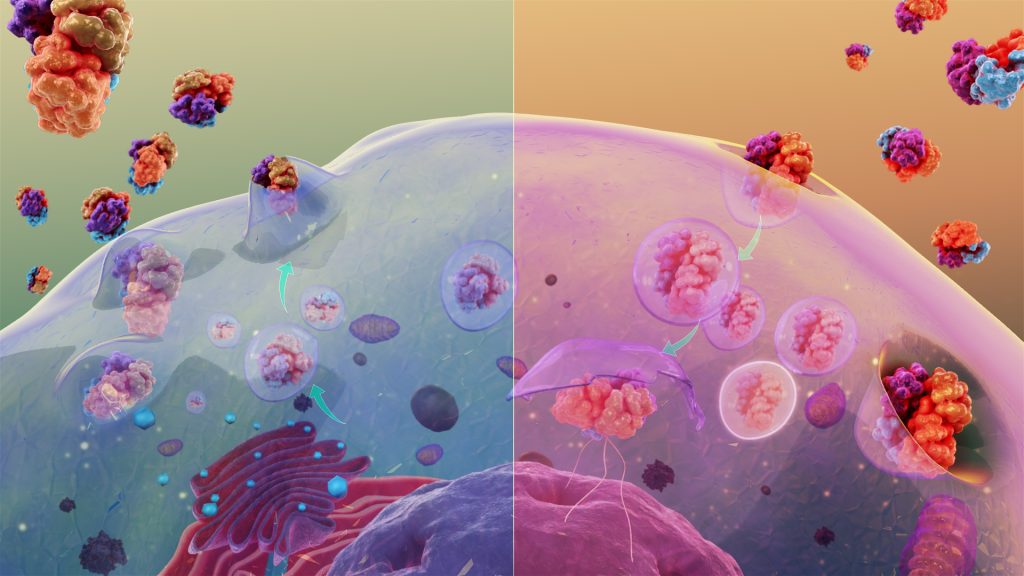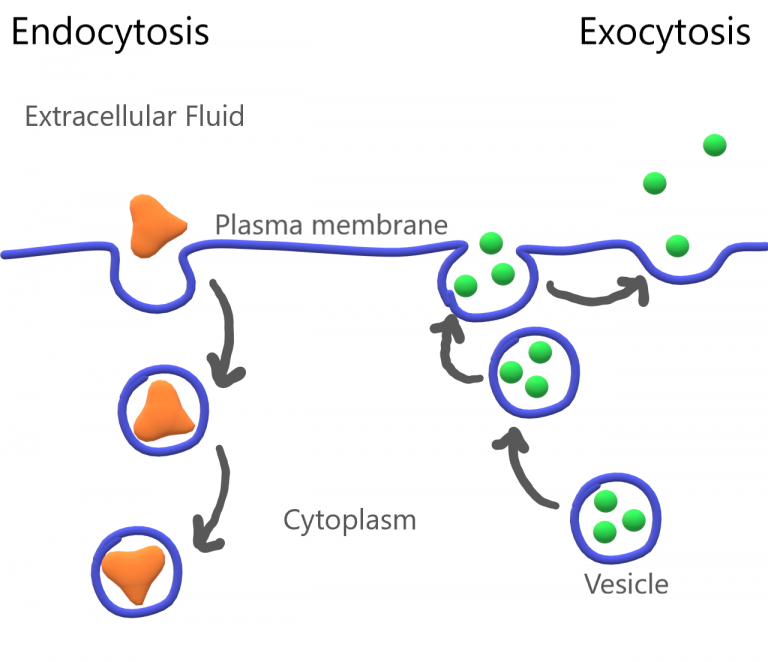4.5 Active Transport
What Is Active Transport?
Active transport requires energy, usually from ATP, to move substances across a membrane against their concentration gradient (from lower to higher concentration). This process often involves proteins called pumps embedded in the plasma membrane. In cells, substances naturally flow from high to low concentration, so active transport is needed to continually pump substances in order to maintain a concentration gradient.
Think of a ski lift at a mountain resort. Skiers naturally glide downhill (passive transport), but to get back up the mountain, they need the powered ski lift (active transport), which requires energy to move them back uphill.
The sodium-potassium pump is a mechanism of active transport that moves sodium ions out of the cell and potassium ions into the cells — in all the trillions of cells in the body! Both ions are moved from lower to higher concentration areas, so energy is needed for this “uphill” process. ATP provides the energy. The sodium-potassium pump also requires carrier proteins. Figure 4.5.1 shows in greater detail how the sodium-potassium pump works. First, three sodium ions bind with a carrier protein in the cell membrane. The carrier protein then changes shape, powered by energy from ATP, and as it does, it pumps the three sodium ions out of the cell. At that point, two potassium ions bind to the carrier protein. The process is reversed, and the potassium ions are pumped into the cell.

Normal body functions require a very narrow range of sodium and potassium ions concentrations in body fluids, both inside and outside of cells. Normal sodium concentrations are about ten times higher outside of cells than inside. Normal potassium concentrations are about 30 times higher inside of cells than outside. Maintaining these gradients are critical for vital body functions, including the transmission of nerve impulses and contraction of muscles. As sodium and potassium ions naturally diffuse from high to low concentration, our body needs to pump them back across the membrane to maintain the proper concentration gradient.
Vesicle Transport
Some molecules, such as proteins, are too large to pass through the plasma membrane, regardless of their concentration inside and outside the cell. Very large molecules cross the plasma membrane with different help called vesicle transport. Vesicle transport requires energy input from the cell, which is also a form of active transport. There are two types of vesicle transport: endocytosis and exocytosis.

Endocytosis and Exocytosis
Endocytosis is a type of vesicle transport that moves a substance into the cell. The plasma membrane completely engulfs the substance, a vesicle pinches off from the membrane, and the vesicle carries the substance into the cell. The process is called phagocytosis, when an entire cell or other solid particle is engulfed. When fluid is engulfed, the process is called pinocytosis.
Exocytosis is a type of vesicle transport that moves a substance out of the cell (exo-, like “exit”). A vesicle containing the substance moves through the cytoplasm to the cell membrane. Because the vesicle membrane is a phospholipid bilayer like the plasma membrane, the vesicle membrane fuses with the cell membrane and the substance is released outside the cell.

Exercises 4.5.1
Text Description
- Phospholipid
- Ion
- Protein
- Carbohydrate
- Pinocytosis
- Exocytosis
- Endocytosis
- Phagocytosis
- Sodium ions
- ATP
- Carrier proteins
- RNA
- An electrical gradient across the cell membrane is called a _____.
- Transport proteins that move substances into and out of a cell are located in the _____.
- When a cell engulfs a solid particle, this is called _____.
- When a cell engulfs fluid, this is called _____.
Possible answers:
- phagocytosis
- plasma membrane
- pinocytosis
- membrane potential
Answers:
- An electrical gradient across the cell membrane is called a membrane potential.
- Transport proteins that move substances into and out of a cell are located in the plasma membrane.
- When a cell engulfs a solid particle, this is called phagocytosis.
- When a cell engulfs fluid, this is called pinocytosis.
“4.8 Active Transport” from Human Biology by Christine Miller is licensed under a Creative Commons Attribution-NonCommercial 4.0 International License, except where otherwise noted.

